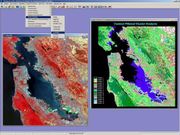
For too long now, local ICT experts have blamed the Seychelles’ National Assembly in particular for failing to make use of modern communication methods such as the Internet.
One critic says, “the Assembly is failing to communicate effectively with the public it serves. A website is part of a wider reform needed to improve communication with the public, its interactivity will fulfil its role as a portal for democracy.”
But with a little help from their friends, the Chinese, the organisation, procedures and general ethos of the National Assembly may not be “seriously out of date” for very long.
The institution recently received a donation worth US $50,000 of ICT equipment from the National People’s Congress of the Republic of China.
The equipment comprised 20 computer sets, 10 printers, 5 laptops, 10 sets of cartridge, 4 TV sets, 4 DVD players and 4 mobile phones.
Whilst the Chinese Ambassador to Seychelles, Geng Wenbing chose to call the donation “a clear evidence of continued collaboration between the two countries”, the speaker of the National Assemble, Francis MacGregor, called it “an ideal tool to capture the gist of the Assembly’s work.”
In March last year the Assembly received another donation of multi-media equipment from the Chinese government worth US $125,000, to help it record its own proceedings.
Once settled in its new building at Bel Eau in 2007, the National Assembly looks set to be well equipped to engage a far wider audience than it currently does.



